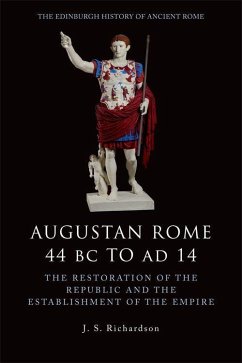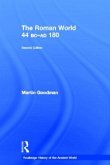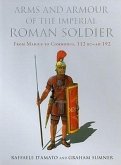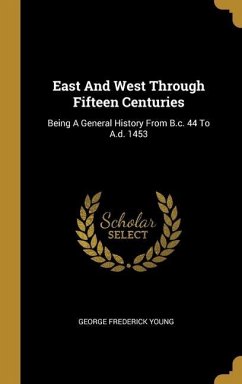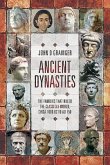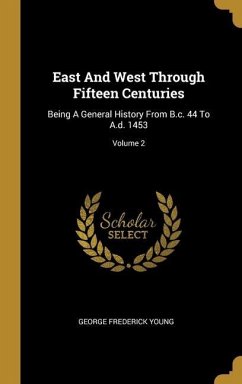Centring on the reign of the emperor Augustus, volume four is pivotal to the series, tracing of the changing shape of the entity that was ancient Rome through its political, cultural and economic history. Within this period the Roman world was reconfigured. On a political and constitutional level the patterns of the republic, which sustained an oligarchic regime and a popularist structure, were transformed into a monarchical dictatorship in which the earlier elements continued to function. On an imperial level, the growth in Roman power reached what was virtually its apogee. In literature and the visual arts, new forms of expression, based on those of the previous generations but closely linked to the new regime, showed great achievements. In society and the economy, the effectiveness and dominance of Rome as the centre of world power became increasingly obvious.
AUTHOR APPROVED Richardson narrates Rome's tortured passage from Republic to Empire with unflinching attention to detail. His account is a sustained tour de force that draws on an unsurpassed mastery of the ancient sources. The Augustus that emerges is less of a hero or a criminal than he has sometimes been imagined, but all the more believable as a result. Greg Woolf, Professor of Ancient History, University of St Andrews The Edinburgh History of Ancient Rome is a chronological history of Rome and the Roman world in eight volumes. From the city's first settlement to the collapse of the western empire and the emergence of Byzantium some 1,500 years later, each volume encapsulates the ever-changing identity of Rome, providing overall unity to its dramatic history. Series Editor: J. S. Richardson Augustus: how the Roman Empire came about The reign of Augustus, the first of the Roman emperors, has been seen, both by contemporaries and over the centuries that have followed, as a pivotal moment in the history of Rome. The final stage in the move to monarchical government and the structures he put in place, which were to last largely unchanged for over two hundred years, ensured this; but Augustus himself remains an enigmatic figure. J. S. Richardson explores the processes which resulted in such a massive shift, and the often unforeseen events which led to the establishment of an empire and a dynasty. Key features * a pivotal volume in the series * traces the changing shape of the entity that was ancient Rome through its political, cultural and economic history * demonstrates how the effectiveness and dominance of Rome as the centre of work power became increasingly obvious J. S. Richardson was Professor of Classics at the University of Edinburgh from 1987 to 2002.
AUTHOR APPROVED Richardson narrates Rome's tortured passage from Republic to Empire with unflinching attention to detail. His account is a sustained tour de force that draws on an unsurpassed mastery of the ancient sources. The Augustus that emerges is less of a hero or a criminal than he has sometimes been imagined, but all the more believable as a result. Greg Woolf, Professor of Ancient History, University of St Andrews The Edinburgh History of Ancient Rome is a chronological history of Rome and the Roman world in eight volumes. From the city's first settlement to the collapse of the western empire and the emergence of Byzantium some 1,500 years later, each volume encapsulates the ever-changing identity of Rome, providing overall unity to its dramatic history. Series Editor: J. S. Richardson Augustus: how the Roman Empire came about The reign of Augustus, the first of the Roman emperors, has been seen, both by contemporaries and over the centuries that have followed, as a pivotal moment in the history of Rome. The final stage in the move to monarchical government and the structures he put in place, which were to last largely unchanged for over two hundred years, ensured this; but Augustus himself remains an enigmatic figure. J. S. Richardson explores the processes which resulted in such a massive shift, and the often unforeseen events which led to the establishment of an empire and a dynasty. Key features * a pivotal volume in the series * traces the changing shape of the entity that was ancient Rome through its political, cultural and economic history * demonstrates how the effectiveness and dominance of Rome as the centre of work power became increasingly obvious J. S. Richardson was Professor of Classics at the University of Edinburgh from 1987 to 2002.

